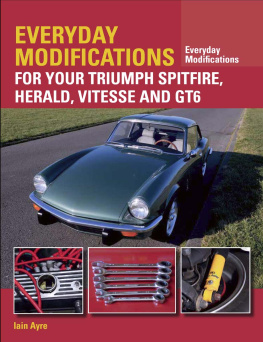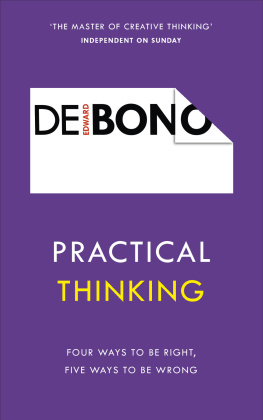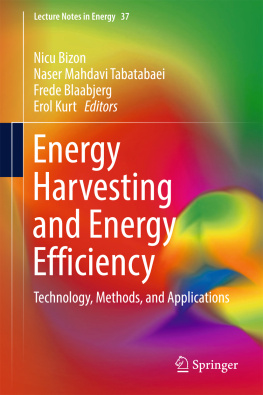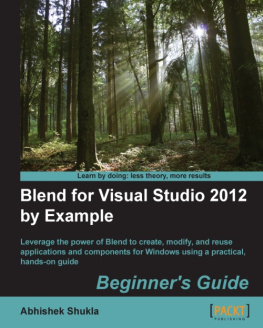Peter Burgess - How to Build, Modify & Power Tune Cylinder Heads
Here you can read online Peter Burgess - How to Build, Modify & Power Tune Cylinder Heads full text of the book (entire story) in english for free. Download pdf and epub, get meaning, cover and reviews about this ebook. year: 2013, publisher: Veloce Publishing Ltd, genre: Children. Description of the work, (preface) as well as reviews are available. Best literature library LitArk.com created for fans of good reading and offers a wide selection of genres:
Romance novel
Science fiction
Adventure
Detective
Science
History
Home and family
Prose
Art
Politics
Computer
Non-fiction
Religion
Business
Children
Humor
Choose a favorite category and find really read worthwhile books. Enjoy immersion in the world of imagination, feel the emotions of the characters or learn something new for yourself, make an fascinating discovery.

- Book:How to Build, Modify & Power Tune Cylinder Heads
- Author:
- Publisher:Veloce Publishing Ltd
- Genre:
- Year:2013
- Rating:5 / 5
- Favourites:Add to favourites
- Your mark:
- 100
- 1
- 2
- 3
- 4
- 5
How to Build, Modify & Power Tune Cylinder Heads: summary, description and annotation
We offer to read an annotation, description, summary or preface (depends on what the author of the book "How to Build, Modify & Power Tune Cylinder Heads" wrote himself). If you haven't found the necessary information about the book — write in the comments, we will try to find it.
The complete practical guide to successfully modifying cylinder heads for maximum power, economy and reliability. Applies to almost every car/motorcycle (not 2-stroke) and to all road and track applications.
How to Build, Modify & Power Tune Cylinder Heads — read online for free the complete book (whole text) full work
Below is the text of the book, divided by pages. System saving the place of the last page read, allows you to conveniently read the book "How to Build, Modify & Power Tune Cylinder Heads" online for free, without having to search again every time where you left off. Put a bookmark, and you can go to the page where you finished reading at any time.
Font size:
Interval:
Bookmark:
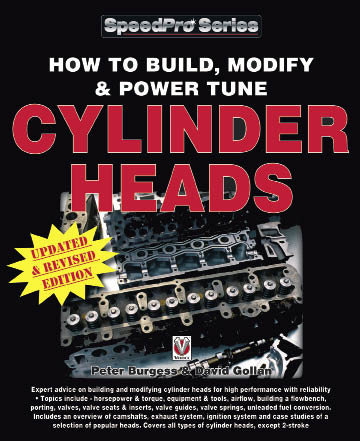

HOW TO BUILD, MODIFY & POWER TUNE
CYLINDER
HEADS
Peter Burgess & David Gollan
First printed in paperback format in 1997.
First published in ebook format in January 2013 by Veloce Publishing Limited, Veloce House, Parkway Farm Business Park, Middle Farm Way, Poundbury, Dorchester, Dorset, DT1 3AR, England Fax 01305 250479 e-mail .
Ebook edition ISBN: 978-1-845846-08-4
Paperback edition ISBN: 978-1-903706-76-3
Peter Burgess, David Gollan and Veloce Publishing January 2013. All rights reserved. With the exception of quoting brief passages for the purpose of review, no part of this publication may be recorded, reproduced or transmitted by any means, including photocopying, without the written permission of Veloce Publishing Ltd. Throughout this book logos, model names and designations, etc, have been used for the purposes of identification, illustration and decoration. Such names are the property of the trademark holder as this is not an official publication.
Readers with ideas for automotive books, or books on other transport or related hobby subjects, are invited to write to the editorial director of Veloce Publishing at the above address.
British Library Cataloguing in Publication Data A catalogue record for this book is available from the British Library. All Ebook design and programming by Veloce Publishing Ltd on Apple Mac.

Veloce Publishing Ltd
WWW.VELOCE.CO.UK
Contents
Introduction, Acknowledgements & about the authors
Introduction
This book has been written to illustrate the theories and techniques which will allow an enthusiastic amateur to successfully modify cylinder heads. Applying the methods and techniques described will result in very noticeable increases in engine torque and horsepower.
Some of the theory may initially appear difficult to grasp, but patient reading and consideration will pay dividends - with practice you will be able to leave the professionals standing.
Even if you dont wish to have a go at modifying your own heads, we hope this book will give a better understanding of the amount of work and skill that is involved when it comes to modifying cylinder heads successfully. At the very least, because youll be aware of what to look for, you should be better equipped to go out and purchase a good quality, professionally-modified head that really will deliver the goods.
Acknowledgements & About the Authors
Peter Burgess built his own flowbench in 1985. A self-taught engineer, his background in psychology laid the groundwork for a scientific method approach and gave him the ability to harness his intuition in making engines work. He works holistically to modify cylinder heads.
Championship engines and heads built by Peter include - Rover (BMC/BL) A Series, B Series, R, S and O Series, Rover V8, TR4, TR6, MG T Type, Pre war MG, Ford Pinto, Ford Kent Crossflow and pre-Crossflow, Toyota Starlet and Nissan Turbo, to name but a few. His favourite engine is the ex-Buick Rover V8.
Peter runs a small, friendly tuning business which enjoys worldwide recognition and distribution.
David Gollan is a qualified Mechanical Engineer. He and Peter met in 1990 whilst he was researching for his thesis on the effects of gasflow on bhp, fuel economy and emissions: theyve been firm friends ever since. David keeps abreast of current automotive engine research by reading avidly all available SAE technical papers. He has a comprehensive knowledge of engineering principals which, combined with his natural flair for understanding airflow, meshes with Peters skills and results in outstanding product performance. His favourite engine is the Ford OHC Pinto. He and Peter spar on the racetrack on test days.
David works as a Hydrometrist for the Environment Agency and acts as Peters consultant.
Our thanks to Liz Burgess for proofreading and stylistic elegance, to Keith Hippey for some of the line drawings and to Robert Day for developing and taking some of the photographs. Thanks also to Phil Gollan, Shaun Powell, Wayne Martin, Andy Fossey and the drag racers who gave us permission to take a few photographs.
Peter Burgess
David Gollan
Using this book & essential information
Using this book
Throughout this book the text assumes that you, or your contractor, will have a workshop manual specific to your engine for complete detail on dismantling, reassembly, adjustment procedure, clearances, torque figures, etc. This books default is the standard manufacturers specification for your model so, if a procedure is not described, a measurement not given, a torque figure ignored, you can assume that the standard manufacturers procedure or specification for your engine should be used.
Youll find it helpful to read the whole book before you start work or give instructions to your contractor. This is because a modification or change in specification in one area will often cause the need for changes in other areas. Get the whole picture so that you can finalize specification and component requirements as far as is possible before any work begins.
Note that the term thou means thousandth of an inch and to fettle is to make small (usually) handwork adjustments until a component is a perfect fit.
Essential information
This book contains information on practical procedures; however, this information is intended only for those with the qualifications, experience, tools and facilities to carry out the work in safety and with appropriately high levels of skill. Whenever working on a car or component, remember that your personal safety must ALWAYS be your FIRST consideration. The publisher, author, editors and retailer of this book cannot accept any responsibility for personal injury or mechanical damage which results from using this book, even if caused by errors or omissions in the information given. If this disclaimer is unacceptable to you, please return the pristine book to your retailer who will refund the purchase price.
In the text of this book Warning! means that a procedure could cause personal injury and Caution! that there is danger of mechanical damage if appropriate care is not taken. However, be aware that we cannot foresee every possibility of danger in every circumstance. You should also appreciate that there is always a danger of cutting into a waterway during head modification and that such a mistake will usually mean that the head will have to be scrapped.
Please note that changing component specification by modification is likely to void warranties and also to absolve manufacturers from any responsibility in the event of component failure and the consequences of such failure.
Increasing the engines power will place additional stress on engine components and on the cars complete driveline: this may reduce service life and increase the frequency of breakdown. An increase in engine power, and therefore the vehicles performance, will mean that your vehicles braking and suspension systems will need to be kept in perfect condition and uprated as appropriate. It is also usually necessary to inform the vehicles insurers of any changes to the vehicles specification.
The importance of cleaning a component thoroughly before working on it cannot be overstressed. Always keep your working area and tools as clean as possible. Whatever specialist cleaning fluid or other chemicals you use, be sure to follow - completely - manufacturers instructions and if you are using petrol (gasoline) or paraffin (kerosene) to clean parts, take every precaution necessary to protect your body and to avoid all risk of fire.
Font size:
Interval:
Bookmark:
Similar books «How to Build, Modify & Power Tune Cylinder Heads»
Look at similar books to How to Build, Modify & Power Tune Cylinder Heads. We have selected literature similar in name and meaning in the hope of providing readers with more options to find new, interesting, not yet read works.
Discussion, reviews of the book How to Build, Modify & Power Tune Cylinder Heads and just readers' own opinions. Leave your comments, write what you think about the work, its meaning or the main characters. Specify what exactly you liked and what you didn't like, and why you think so.

